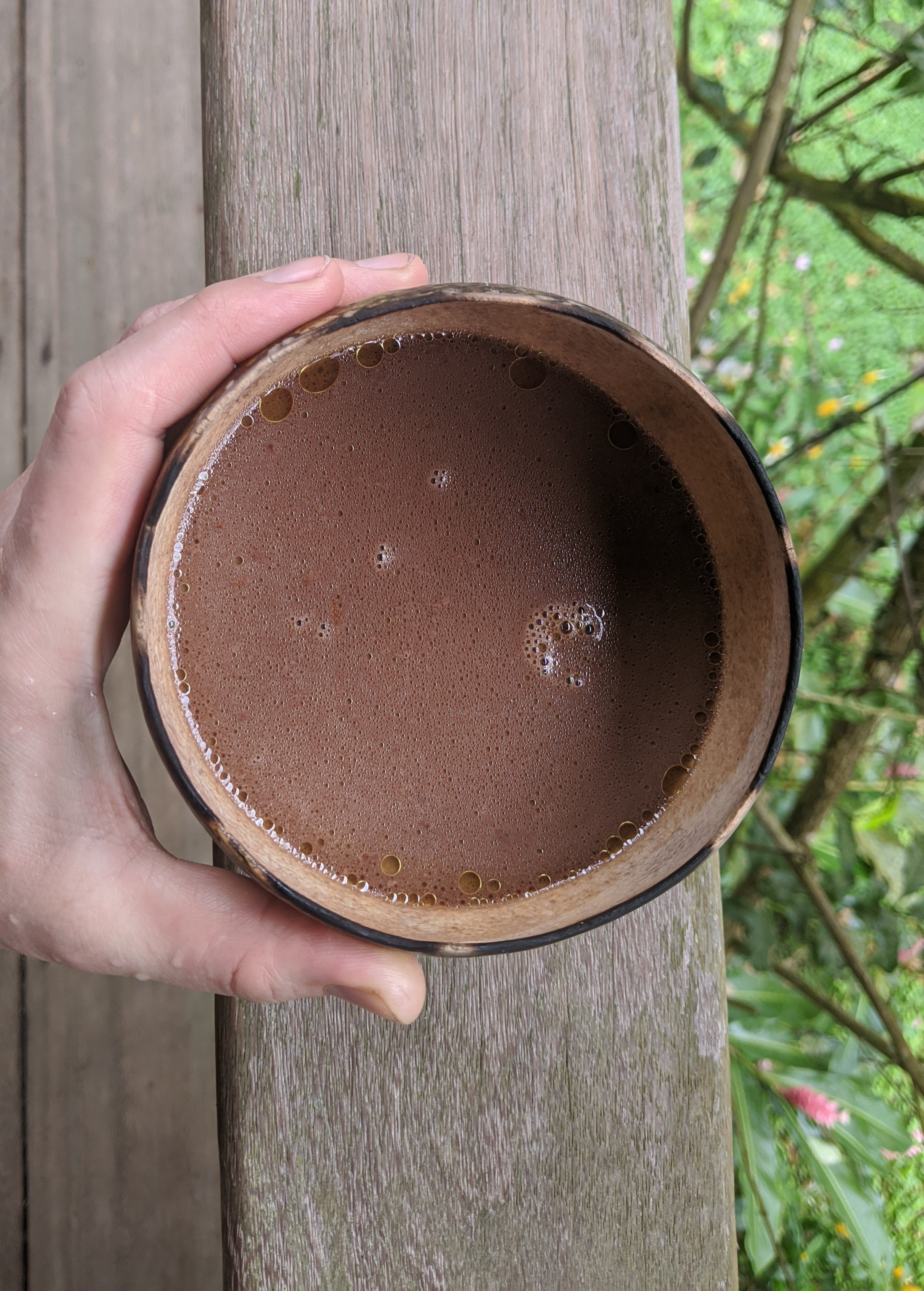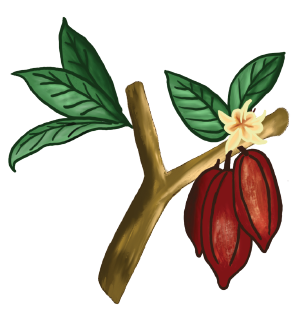Good to Drink!
Cacao has been consumed for at least 5,300 years - not as a sweetened dessert bar, but as an energizing and filling drink. The first evidence of cacao consumption is from ceremonial pottery recovered from a coastal site in Southwestern Ecuador called Santa Ana-La Florida (read more about these most recent findings here and here).
The earliest archeological evidence of cacao in Mesoamerica ~3,900 years ago, meaning that cacao beans were fermented, roasted, dried, ground and mixed with water into a drink for at least 1400 years before the same was done in Mesoamerica.
Image Credit: Archaeology Today
Over several thousand years, the chocolate tree was dispersed by humans throughout the tropical Americas so that the seeds could be harvested and made into drinks. Cacao trees and the seeds they produce were so revered that in some places the seeds were used as currency. Cacao diversified into many distinct varieties over the large geographic region where it was cultivated, and many ceremonies developed in honor of the importance of cacao to daily life and its positive effects on mood and cognition. Ground maize, vanilla, spicy chili and allspice berries are just a few of the many additions used to flavor chocolate drinks.
It wasn’t until long after cacao was introduced into Europe that the first solid chocolate bar was made in Switzerland in the late 1800’s.
A How-To Lesson From An Expert
Turn the sound on the video to hear the original Spanish, and below is an English translation:
“Cut slivers off the cacao, because it is easier to dissolve if it is in small pieces. Add a large spoonful of cacao (we recommend ~30g!) per cup of hot chocolate to the boiling water. Add sugar or sweetener, and any milk or milk substitute to your liking.
Leave the chocolate to boil gently over low heat for several minutes. Slowly boiling the mixture and use a molinillo to create a delicious hot chocolate with crema. To make the crema, you use a ‘molinillo’, and this is a Colombian style molinillo, but they can be found in any store [locally in Ecuador]. In Ecuador there are also molinillos made of metal, and in Mexico there are very ornate and beautiful versions.
This particular cup of chocolate has a marvelous addition: Chai masala! Add a pinch to your liking, and the chocolate is ready. It is very hot, and smells delicious!”
Yamile Roldan of Finca Sueños has shared an instructional video of her morning ritual to make a perfect Colombian style hot chocolate with a chai twist. She is using 100% heirloom cacao she grew at Sueños, chai masala from Fork on a Road, and a tool called a molinillo to thoroughly dissolve the chocolate into the boiling water.
A Visual Guide to Making Unforgettable Drinking Chocolate
1. For each 8oz cup, break 30g/1oz (or 1 bar) of chocolate into small pieces. Add chocolate pieces to hot water. Milk or milk substitute (if you want it) is added later.
2. WHISK VIGOROUSLY!! This chocolate still has cacoa butter. It takes more effort to dissolve, but is so much more satisfying and delicious than powdered hot chocolate from a packet. To use a wire whisk or wooden molinillo, roll it quickly back and forth between your palms. A frother works great, too!
Whisk until you create ‘espuma’ (foam). Take care not to tip your mug! You want chocolate in your mug and not on the counter.
3. Optionally add milk, milk substitute, sugar and spices. Whisk more to incorporate. When in doubt, whisk.
Relax and enjoy!
At Sueños, like in the other locations in the tropical Americas where cacao is grown, we are much more likely to consume cacao as our energizing morning drink to start the day than as a sweet dessert bar to end the evening. One reason is that drinking 100% ground cacao beans (without the cacao butter removed) is a delicious, energizing and satisfying way to start the day. Another reason is the tropical temperatures mean that dessert bars often turn into a melty mess and just aren’t practical in tropical climates.

Breakfast crepe with freshly squeezed orange juice, an egg, and a cup of frothed cacao

A durable and renewable cup made of a dried fruit of the calabash tree (Crescentia alata) is my personal favorite drinking vessel

Using a molinillo to create espuma (froth) on the hot chocolate is a key technique to make your drink as delicious as possible



